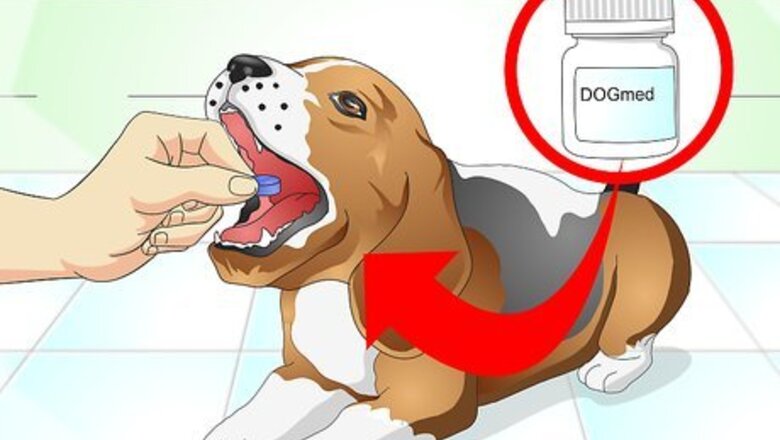
views
Monitoring Your Dog's Health
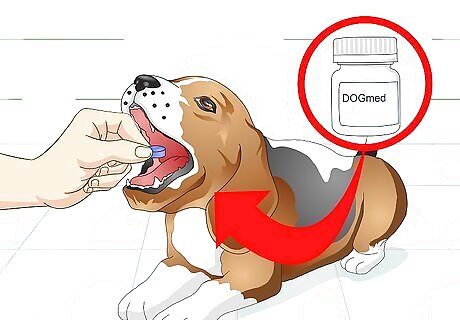
Give your dog medication. Follow your veterinarian's dosing instructions to make sure your dog gets his medication regularly. To help you remember, create a simple tick box chart and note when you've give the medicine. If you need to give medication twice a day, it's most effective to give each dosage at twelve hour intervals. For example, give one dose at 8 am and the other at 8 pm. You should also ask if the medication needs to be taken with meals. Charting when you medicate can be especially helpful if you're sharing nursing duties with a partner. This way, you know if the other person has treated the dog.
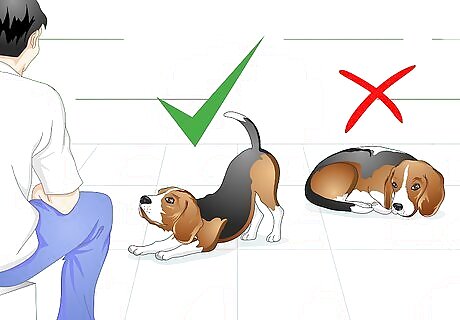
Pay attention to your dog's attitude. A dog's demeanor says a lot about how he's physically feeling. You'll need to make sure his health is gradually improving and responding to treatment. For example, he should begin to pay attention to you, wag his tail, and get up to greet you. It's also a good sign if he perks up and starts asking for food. If you notice your dog becoming less interactive (just lying still), he may be getting worse and need medical attention.

Track how often your dog vomits. If he is vomiting and not drinking then you need to make sure he doesn't become dehydrated. After he vomits, withhold food for 12 to 24 hours, but keep offering water. If he is unable to keep fluids down either, immediately contact the veterinarian. Be prepared to tell your vet how many times in a specific span of time your dog has vomited. However, if he's vomited just once and resumed eating and drinking again, it's probably no cause for alarm.
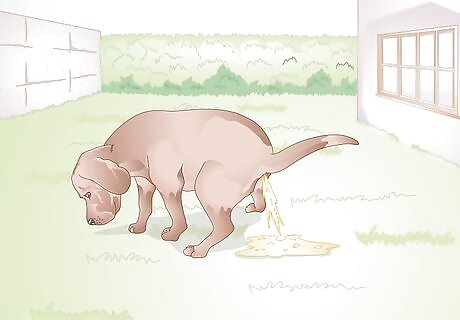
Look for diarrhea. You'll need to follow your dog into the yard to see what he eliminates. While a little diarrhea might be expected with your dog's illness, contact the vet if you notice large volumes of watery diarrhea. You should also check his stools for blood (another reason to see the vet). Your dog may need intensive supportive care like intravenous fluids. Even if your dog has a little diarrhea, be sure to offer lots of fluid. Ensure that he's getting more fluid than he's losing.
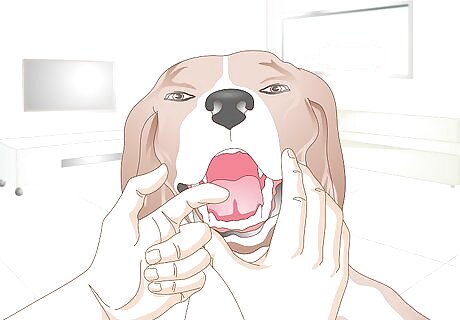
Notice signs of dehydration. Look at your dog's gums, which should be pink and moist. If they're dry feeling, he may be dehydrated. You can also lift up the scruff of your dog's neck and let it drop. If hydrated, it should immediately return to the original position. If dehydrated, the skin will slowly fall back over the course of a few seconds, rather than snap back. Dehydration in a sick dog is a cause for concern, so take your dog to the vet. If you notice your dog is dehydrated, you can try offering fluids. If he takes them, continue to watch for dehydration. However, if he can't keep fluids down, get immediate medical care. Your dog may need medication of intravenous fluids to prevent organ damage.
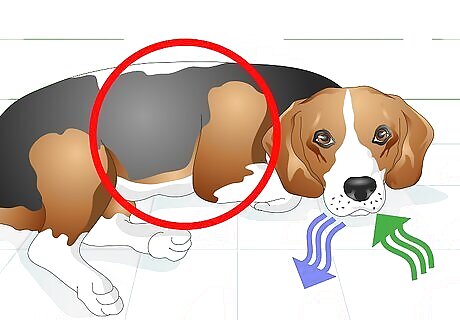
Watch your dog's breathing. Your dog's breathing can tell you a lot about how he's feeling. If he's in pain, he may breathe heavily or pant. Coughing and heavy breathing are signs of a chest infection. You should also check your dog's gums if his breathing causes exaggerated chest movements. The gums should be pink and healthy, but if they look pale or tinged blue, contact the vet. Your dog might not be getting enough oxygen and could be in respiratory distress. Count how many breaths your dog takes a minute (normal is 20 - 30) and keep an hourly record. If the rate steadily increases, his condition is deteriorated and you need to contact the vet.
Caring For a Sick Dog
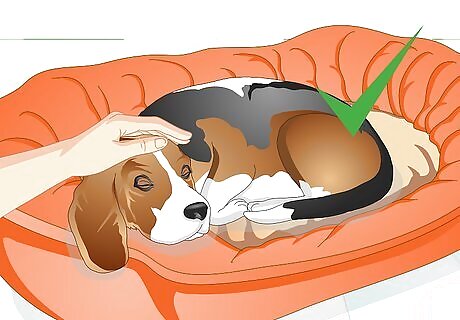
Make the dog comfortable. Your sick dog should have somewhere he can lie down and rest. He might like a padded bed (like a bean bag) or sheepskin rug that's soft and supportive. Set up a resting area in a quiet spot so he's not disturbed. If your dog is small or shaking and shivering, cover him with a blanket or offer a hot water bottle wrapped in a towel (so it doesn't scald his skin). If he is liable to vomit or dribble urine, you may want to lay a puppy pad over the bed to soak up any bodily fluids. Puppy pads also prevent your dog from lying in his mess. EXPERT TIP Colleen Demling-Riley, CPDT-KA, CBCC-KA, CDBC Colleen Demling-Riley, CPDT-KA, CBCC-KA, CDBC Canine Behavior Consultant Colleen Demling-Riley (CPDT-KA, CBCC-KA, CDBC) is a Canine Behavior Consultant and the Founder of Pawtopia Dog Training. With more than 20 years of experience, she specializes in creating and customizing dog management programs for dog owners. She is a Certified Pet Dog Trainer-Knowledge Assessed, Certified Behavior Consultant Canine-Knowledge Assessed, Certified Dog Behavior Consultant, and American Kennel Club Canine Good Citizen Evaluator. Colleen is a member of the International Association of Canine Professionals and has been a featured expert in national media including the New York Times, Woman’s Day, Readers Digest, Cosmopolitan, and Yahoo.com. Colleen Demling-Riley, CPDT-KA, CBCC-KA, CDBC Colleen Demling-Riley, CPDT-KA, CBCC-KA, CDBC Canine Behavior Consultant When your dog is having health issues, give them extra care and attention. Make your dog as comfortable as possible. Put them on a soft bed or blankets in a quiet spot where they can rest peacefully, like a crate in a quiet corner of the family room. Give them space and avoid forcing them to walk or play. These comforting gestures can make a big difference in how your dog feels while they're sick or uncomfortable.
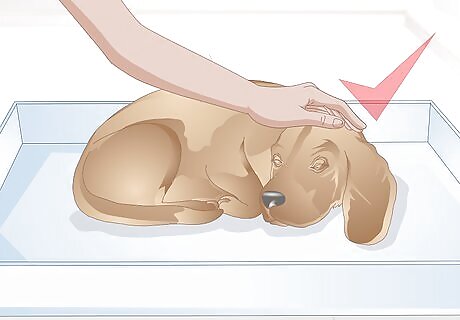
Position your dog so that they're lying comfortably. Your dog should change positions regularly if he's not moving around much. To prevent pressure sores, turn your dog to rest on his opposite side every hour, if he's not sleeping. Mix vinegar and salt in a bowl and wet a sponge with your makeshift cleaning solution. Then, proceed to the following steps. Dogs usually use the same sleeping position even when they're sick. However, sleeping more than usual, getting up multiple times throughout the night, or whimpering when changing sleeping positions can be signs that they're sick.
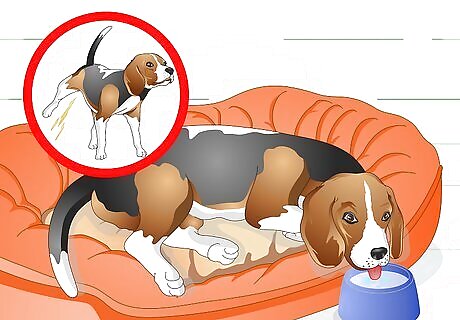
Offer water and regular toilet breaks. If your dog is allowed to drink, make sure that he has a water bowl within reach so that he can lap without getting up. It may be a good idea to place several water bowls around the house. This can remind him to drink and prevent dehydration. If your dog is staying hydrated, you'll also want to take him out for regular toilet breaks, such as every four hours. If your dog has diarrhea, he should be able to get to a toilet area quickly, especially if he can't make it outside. Ensure he has a flap, leave a door open, or put puppy pads down so he can easily eliminate without feeling guilty.
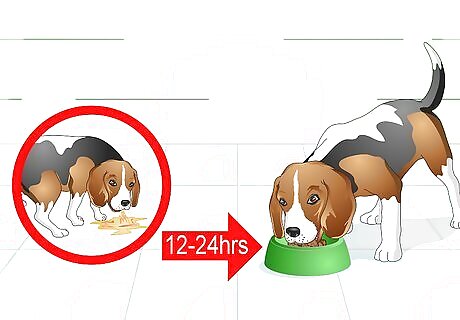
Feed your dog. If your dog has vomited, don't feed him anything for 12 to 24 hours. This will give his stomach a chance to rest. When he's ready to eat, feed him smaller meals frequently. You might want to divide his daily ration into six smaller portions, feeding them every two or three hours throughout the day. If he's not eating well, try warming the food slightly and hand feed him. Remember to take your dog out for a toilet break after eating. Your veterinarian may suggest a special diet for your sick dog. For example, dogs with sickness or diarrhea should eat a bland, easy to digest diet like cooked chicken breast or white fish with boiled white rice.
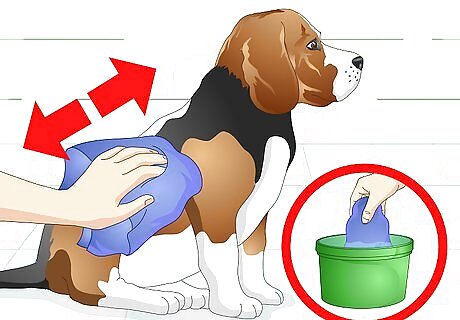
Keep your dog clean. Your sick dog may soil himself with urine or feces. Not only will this make him uncomfortable, but the urine can burn the skin (urine scald). If he does soil himself, give him a blanket bath. Soak a cloth in clean water and wash the fur, refreshing and rinsing it in clean water until the cloth comes away clean. If he's constantly dribbling urine, apply a layer of petroleum jelly to the skin of his belly and be sure to wash the area regularly. If you're using them, remember to change soiled puppy pads for fresh ones. Your dog probably won't groom himself often while he's sick. Use balls of damp cotton wool to keep his eyes clean and free of discharge.
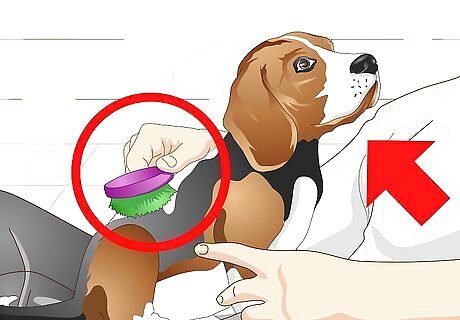
Reassure your dog. It's understandable that your dog may feel vulnerable when he's sick. If you act calmly and quiet around your dog, this can reassure him. Stroke him gently to relax him. When he appears to be improving, brush or groom him to improve his mood and self-esteem. Your dog should be in a warm, comfortable place where he's able to get rest. Check on him periodically to let him know you're around and watching out for him.




















Comments
0 comment